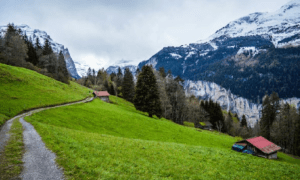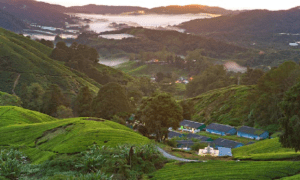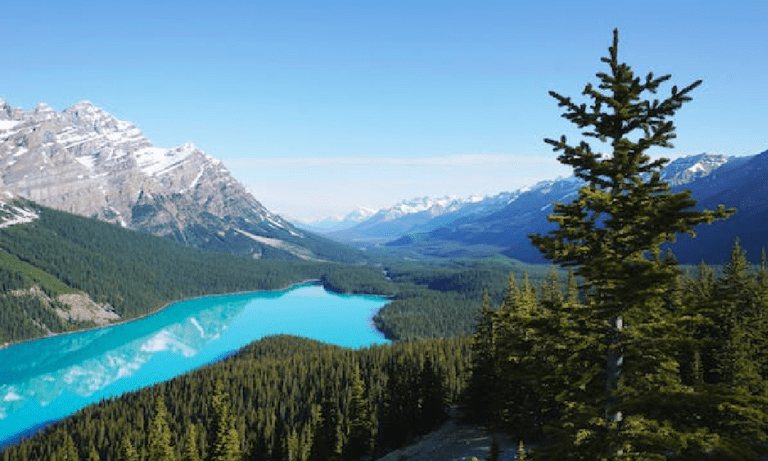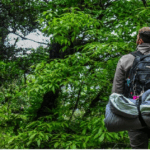
Introduction:
Tourism challenges are delicate issues that the tourism sector has to deal with. Even though it greatly contributes to economic growth and intercultural communication, the tourism sector faces difficulties in trying to be environmentally sustainable.
The reasons for these challenges are many and include changes in the economy, social effects, environmental problems, and changing travel tastes.
These issues have to be addressed if tourism is to have long-term, sustainable benefits. One of the main problems is striking a balance between financial success and environmental protection in 2024.
Our cultural and ecological legacy is deteriorated by the pressure that tourism growth worldwide places on ecosystems, habitats, and natural resources.
It is imperative to provide sustainable tourism programs that focus on preservation and lessen negative environmental impacts.
Finding fresh approaches to finance environmentally friendly tourism is another issue. Development of infrastructure, marketing of destinations, community development initiatives, and conservation efforts all need sufficient funding.
Now let us look into these problems in more detail and see how they impact the ever-changing tourism sector in 2024.
Tourism Challenges :
I. Development of the Work Force and Skills

1. Filling up the Widening Skills Gap in the Workforce
To thrive in an evolving industry, the tourism sector must bridge the widening skill gap in its workforce by addressing new industry demands.
This calls for giving training and development of staff members first priority.
2. Support programs which promote continuing education and professional growth:
Through extensive educational programs, you can create a culture of ongoing professional growth and keep a highly skilled workforce updated on industry developments and best practices.
3. Encouraging Motivation and Retention of Workers
Retaining competent employees presents a huge problem for the tourism industry. Businesses must use effective employee retention and incentive strategies to counteract this, such as providing competitive pay scales, opportunities for career advancement, and a positive work environment.
4. Promoting Linguistic Proficiency and Cultural Awareness
Strong linguistic skills and a knowledge of many cultures are prerequisites in the global and varied tourism sector of today.
This implies that developing a genuine respect for different cultures and improving language abilities should be the main priorities of the tourism sector.
This way, they could ensure that there is effective communication and productive connections with guests.
Every problem has a different set of complexities that need tailored solutions if the tourism sector is to grow and prosper sustainably in the ever-changing future.
II. Marketing Travel Destinations for Attracting Tourists and Improving International Competitiveness
Destination marketing and branding are a unique field of tourism sector challenges. If you want to prosper in this highly competitive market, you must deliberately and successfully handle these challenges.
Let us look at four main concerns affecting tourism in this region and possible remedies.

5. Creating Cool Personalities for Brands
A location must possess a distinct personality if it is to attract visitors. It should emphasize its distinctive features compared to other locations, such as its trendy culture, breathtaking scenery, and entertaining activities. To do this, they have to tell a compelling narrative that enthralls guests and explains the spirit of the place.
Everything from the amazing photos to the engrossing story they tell should come together to stimulate people’s curiosity in the place.
6. Utilizing social media and the internet:
In order to succeed nowadays, companies need to fully utilize the possibilities of the Internet. Their strong online presence with eye-catching websites, social media accounts, and engaging content allows them to interact with a wide range of individuals and reach more of them.
The tactics should be used wisely to ensure that their website shows up when users look up specific terms; this includes running advertisements catered to specific demographics.
They can work together with well-known online personalities and get more attention. Using several websites and staying up to date on technology developments, they might entice people to come to their place.
7. Locating the Right Visitors
Destinations must know what different groups enjoy and want in order to promote to them effectively.
Places can divide the people they wish to attract according to things like where they are from, what they like to do, and why they travel, in order to target certain groups with their messaging and offers.
Creating special events and marketing them especially for them increases the attraction of the place for adventure seekers, leisure seekers, and those interested in discovering other cultures.
It facilitates companies in proving they are the best choice for the clients they want to attract in by providing a comprehensive knowledge of different populations at large.
8. Competing Globally:
Locations need to work very hard to stay ahead of their competitors in the tourism industry. They have to monitor what other businesses are doing, assess how they measure up, and look into development opportunities if they are to succeed in a very competitive industry.
Using their advantages—their attractive buildings, friendly locals, and unique attractions—locations can draw attention to what makes them special. Dealing with well-known partners, airlines, and travel agents helps raise awareness of your location.
The place can become well-known and able to compete with other popular locations by attending large events, trade shows, and doing internet marketing targeted at specific visitor groups.
By focusing on creating cool brand personalities, using the internet to connect with people, identifying the right audiences to attract, and being competitive in the global market, locations can attract more tourists, grow into highly sought-after tourist destinations.
III. Cooperating Alliances and Stakeholder Participation:

9. Encouraging Industry and Government Cooperation:
The sustainability of the tourism sector depends on cooperation between government agencies and industry stakeholders.
Governments and companies can collaborate to develop infrastructure, increase destination competitiveness, and draft advantageous laws and regulations by promoting partnerships, sharing resources, and setting common objectives.
10. Participating Actively in Local Communities:
The success of tourist sites is mostly dependent on the local communities. More sustainable practices and wider involvement can result from talking with locals, learning about their hopes and worries, and including them in tourism development processes.
Community meetings, programs to develop capacity, and projects that encourage regional business and cross-cultural interaction are all ways to accomplish this.
11. Building robust alliances with commercial sectors and non-governmental organizations:
The destinations ought to work with companies and non-governmental organizations. This will improve the management and growth of destinations.
Partners allow locations to access knowledge, resources, and creative ideas.
Working together, one may ensure that tourism is approached responsibly and holistically by concentrating on issues like sustainability, conservation, social responsibility, and community development.
IV. Protecting Cultural Legacy and Ensuring Real Experiences

13. Safeguarding our Priceless Cultural Assets
If we want visitors to enjoy real and significant experiences, we must protect our cultural past. Places need to act to preserve cultural treasures, customs, and historical locations.
This involves teaching visitors about our history, acting responsibly when they come, and involving local communities in maintaining and promoting their culture.
14. Getting Culture and Tourism to Coexist:
Tourists often turn our culture into a commodity. We have to figure out how to attract visitors while still preserving our authentic and distinctive culture.
This can be accomplished through careful tourism management, which guarantees politeness of guests and gives communities a say in decisions related to tourism.
15. Permitting Local Governments to Take Part in Tourism
The locals have to be involved in the design of tourism events. People feel more ownership of tourism when they are included in the fun aspects and have the chance to make money from it.
Everyone thus believes that they are sharing in the benefits, and travel turns into a common experience.
16. Making Tourism Adapt to Our Customs:
A lot of visitors might be positive for our cultures as well as negative. Tourism ought to be promoted rather than harmed to our culture. In order to prevent any problems, everyone must be involved, thoroughly prepared, and closely monitored for guest behavior.
Destinations may increase their marketing and branding efforts, attract more tourists, and guarantee that our culture is genuine and protected by tackling these tourism issues and making the required adjustments.
Offering visitors amazing experiences and helping the local community at the same time helps to promote tourism’s healthy expansion.
V. Ensuring Inclusive Practices and Accessibility of Tourism
Encouraging accessibility and inclusion is critical to growing an ethical and environmentally sustainable tourism industry.
All people should be able to travel, irrespective of their age, physical condition, or place of origin. For the tourism business, this is a major obstacle.

17. Ensuring Fair Access for All to Tourist Opportunities:
Assuring equal access to tourism possibilities for all people is one of the main tourism issues.
This means taking down obstacles that stop some groups from fully engaging in tourist-related activities.
Infrastructure and services that meet the many demands of tourists—transportation, lodging, attractions, and facilities—must be developed.
Destinations can foster an inclusive atmosphere where everyone may profit from tourism by tackling these issues.
18. Offering a Range of Travelers Inclusive (All-inclusive) Services:
Ethics goes beyond accessibility in terms of location. Furnishing services and amenities that meet the different demands of passengers is another aspect of it.
This entails considering food limitations, religious and cultural preferences, language accessibility, and support for those with sensory impairments.
Destinations and travel agencies should work to provide a variety of choices and services to suit various tastes and make sure that every guest feels appreciated and at home.
19. Clearing Down Social and Physical Obstacles:
Identification and removal of social and physical obstacles preventing some groups from participating is crucial to promoting inclusion.
Insufficient transit alternatives, inappropriate facilities, or inaccessible infrastructure can all be physical obstacles.
Prejudices, ignorance, or discriminatory actions can all lead to social barriers. By laws, infrastructural upgrades, public awareness campaigns, and professional tourist training, these obstacles must be forcefully removed.
20. Meeting Senior and Disabled Travelers’ Needs:
Traveling as a senior or disabled person can provide particular difficulties. They must have their particular demands taken into account by the industry, which should offer appropriate facilities.
This covers easily accessible lodging, modes of transportation, well-equipped tourist attractions, and personnel with specialized training to help with particular needs.
Destinations can access a large market and guarantee that everyone can have fulfilling travel experiences by meeting the needs of these tourists.
VI. Conservation and Welfare of Animals in Ethical Wildlife Tourism
Sustainable and responsible tourism heavily depends on ethical wildlife tourism. It includes advancing ethical wildlife interactions, protecting animal welfare, supporting conservation initiatives, and educating tourists.
The difficulties in realizing ethical wildlife tourism are many and call for coordinated efforts by the tourism and travel industry, governments, local communities, and tourists themselves.

21. Upholding Animal Welfare and Conservation Efforts:
Making sure that wildlife engaged in tourism activities is safe and protected is one of the main tourism challenges.
Setting and upholding laws and guidelines that give animal welfare first priority is essential.
This covers making appropriate ecosystems available, reducing stress and disturbance, guaranteeing access to good food and medical treatment, and outlawing dangerous activities.
One of these activities might be commercial captive breeding. It takes cooperation from all parties involved to create rules and monitoring mechanisms that maintain animal welfare standards.
22. Encouraging Conscious Wildlife Interactions:
Minimizing detrimental effects on animals while offering tourists interesting and instructive experiences is known as responsible wildlife interactions.
This calls for putting rules and best practices for seeing wildlife into action, such as keeping a safe distance, avoiding feeding or touching animals, and honoring their natural habits.
Destinations can reduce disturbances to wildlife habitats and support long-term conservation of them by encouraging ethical wildlife encounters.
23. Promoting Ecological Wildlife Tourism Methods:
Ecosystems that sustain biodiversity and biodiversity itself must be preserved through sustainable wildlife tourism methods.
This entails controlling the number of visitors, putting in place carrying capacity restrictions, and creating infrastructure that reduces habitat damage.
Additionally, it entails working with conservation groups, encouraging long-term jobs for local populations, and endorsing conservation projects centered in the community. Promoting environmentally friendly wildlife tourism methods is essential to guaranteeing the long-term success of tourism centered on wildlife.
24. Creating Conscience and Informing Guests
The need to educate tourists about the value of moral wildlife tourism cannot be overemphasized.
Distributing information and educational resources that stress the value of conservation efforts, the consequences of human activities on wildlife, and ethical behavior can promote a greater understanding of and love for wildlife.
Through interactive activities, guided tours, and informative events, visitors can learn more and be motivated to become wildlife conservation ambassadors.
The tourist business can contribute significantly to the preservation of biodiversity and the promotion of a more moral and sustainable approach to wildlife tourism by maintaining animal welfare and conservation efforts, encouraging responsible wildlife encounters, and promoting sustainable practices.
VII. Evolving Travel Trends and Patterns:

25. Promoting Sustainable Travel and Ecotourism:
The travel and tourism industry is stressing sustainability and ecotourism more and more in modern society.
One way to assist ecotourism and sustainable travel initiatives is to put policies in place that reduce negative environmental effects, protect natural resources, and advance the welfare of the local people.
It involves incorporating environmentally friendly features into all facets of the travel experience, from lodging and transportation to attractions and activities.
Destinations and companies supporting ecologically friendly tourism and ecotourism initiatives can help to preserve biodiversity, the livelihoods of the local people, and natural and cultural history.
This includes putting into effect ethical tourist principles, such cutting carbon emissions, encouraging recycling and waste reduction, saving energy and water, and patronizing regional companies and craftspeople.
26. Developing Opportunities for Authentic Experiences and Experiential Tourism
Nowadays’ tourists are not content to just take in the scenery. They look for real, profound experiences that let them understand the customs, culture, and way of life of the area.
Offering events and programs that go beyond typical tourist attractions allows visitors to interact with the destination more deeply, therefore creating potential for experiential tourism.
Destinations may highlight their distinct character and cultural legacy by offering real experiences.
This could be participatory storytelling, culinary experiences, cultural festivals, practical workshops, and community-based tourism projects.
Destinations can guarantee authenticity and give locals economic opportunity by involving local communities in the planning and implementation of these experiences.
27. Embracing the Emergence of Remote Work and Digital Nomadism:
Rising remote work flexibility is shaking up the tourism industry, forcing destinations to adapt to new travel patterns.The rapid shifts in human working patterns will have a big effect on the tourist industry.
For travellers who can work remotely while seeing new places, the emergence of digital nomadism and remote employment creates new opportunities.
Accompanying this development is offering remote workers and digital nomads the infrastructure and services they require.
Coworking spaces, dependable internet access, and packages and lodging catered to the demands of this expanding market are all things that destinations can do.
Destinations can bring in repeat business, lengthen stays, and support regional economies by adopting digital nomadism and remote employment.
28. Adjusting to Changing Traveler Demands and Preferences
Traveler needs and preferences are constantly evolving as a result of shifting social trends, technological advancements, and demographic shifts. The travel and tourism sector have to be aware of these developments and adjust in order to stay competitive.
This is customizing the offers to meet the needs and interests of different visitor groups.
It can be giving customized experiences, making use of technology to increase convenience and connectedness, offering ethical and sustainable choices, and honoring different viewpoints.
Destinations and companies may draw in and please modern tourists, support sustainable development, and produce experiences that will never be forgotten by following these trends.
VIII. Data Privacy and Security
29. Protecting Client Data and Private Information
In an increasingly digital world, the tourism sector depends critically on the privacy of customer information. Entire safety measures have to be put in place to guarantee the security, integrity, and accessibility of the data.
30. Increasing Data Protection and Cybersecurity Measures:
It takes excellent cybersecurity to keep customer data safe from breaches, unlawful access, and cyberattacks. It is putting techniques, protocols, and technologies into use in order to defend data, computer networks, and systems from unwanted attacks.
This covers things like encryption, firewalls, safe ways of authentication, routine system upgrades, and staff training on best security procedures.
31. Establishing Data Handling Trust and Confidence
The tourism industry depends on gaining the confidence and trust of its patrons. It calls for responsible and open methods of data handling.
This calls for acquiring client permission, being transparent about data collecting and use, and ensuring that data is only utilized for the intended use.
Creating unambiguous privacy policies, giving clients ways to manage their data, and responding quickly to data breaches or events all help to foster confidence.
32. Ensuring Compliance with Tight Data Privacy Laws:
Data privacy regulations control the business handling of customer data.The regulating organizations could resemble the European Union’s General Data Protection Regulation (GDPR).
Protecting consumer information and avoiding legal repercussions need adherence to these rules. It covers getting the required approval, giving open information about data handling procedures, respecting the rights of data subjects, and putting in place suitable data storage and retention rules.
The need to stress data security and privacy is vital. For this reason, the tourism industry can fairly ensure that customer information is protected, maintain customer confidence, and lower the risks connected to cyberattacks and data breaches.
For efficient protection of client information, one must keep up with the most recent cybersecurity techniques and adhere to pertinent data privacy laws.
IX. Research in Tourism Education: One of the primary issues facing tourism is staff education.

33. Promoting Lifelong Learning and Professional Development:
The tourism sector is ever-changing. It is essential to establish a culture of continual learning and professional growth.
This ensures that individuals and organizations stay updated with the latest industry trends and best practices, enabling them to deliver high-quality tourism experiences.
34. Keeping Abreast of Industry Trends and Best Practices:
Staying informed about industry trends and best practices is essential for tourism professionals.
They can modify their strategies, goods, and services to satisfy changing needs and expectations of visitors by staying up to date on the most recent advancements.
This involves staying connected with industry publications, attending conferences and workshops, and actively participating in professional networks.
35. Collaboration between Academics and Industry Experts Encouraged:
In order to grow knowledge and promote innovation in the tourism business, academic and professional collaboration is essential.
By fostering strong partnerships, academia can conduct relevant research, provide valuable insights, and contribute to the development of sustainable tourism practices.
On the other hand, business professionals can impart their skills, problems, and real-world experience, enhancing academic research and assuring its relevance to actual situations.
36. Promoting Research and Innovation in the Tourism Sector:
Research and innovation drive the growth and sustainability of the tourism industry. By promoting research initiatives, organizations can gain a deeper understanding of tourism dynamics, consumer behavior, and market trends.
These inputs will build novel approaches, goods, and services which can be used to improve the overall tourism experience and aid in the long-term growth of the industry.
X. Development of Methodologies for Financial Sustainability

37. Striking the Correct Balance Between Environmental Protection and Economic Benefits
The ability to reconcile financial benefit with environmental preservation is essential to sustainable tourism.
It is implementing methods that maximize economic value while reducing adverse environmental effects, encouraging biodiversity conservation, and protecting natural resources for coming generations.
38. Investigating Novel Approaches to Sustainable Tourism Finance:
Approaches to sustainable tourism are greatly aided by creative financial arrangements. Examining other financial options to support initiatives that support sustainability objectives includes impact investments, crowdsourcing, public-private partnerships, and grants.
Diversifying funding sources allows the tourism industry to tackle funding issues and promote sustainable development.
39. Promoting Public-Private Cooperations to Advance Development:
Sustainable tourist development is mostly facilitated by public-private partnerships. Adopting sustainable methods, building of infrastructure, and community-based initiatives are vital.
Working with municipal governments, private companies, and communities, the tourism stakeholders can combine their resources, expertise, and networks to accomplish this. These alliances promote responsibility amongst participants and coordinated efforts for the development of sustainable tourism.
40. Advising Community Development Projects to Get Funding
Making sure that local populations gain from tourism activities is mostly dependent on community development programs.
Developing avenues to promote entrepreneurship, capacity building, and community-led projects is necessary to facilitate funding for these projects.
Giving local people the tools they need to participate in and profit from tourism can help to advance sustainable development. Enhanced social well-being and livelihoods will follow from this.
By giving ongoing education, teamwork, research, creativity, and sustainable financing strategies top priority, the tourist industry can improve its methods, support regional growth, and give visitors memorable experiences all while protecting the environment.
XI. Extending the Offering of Travel Services and Modifying the Sites
Diversification of the destination is necessary for tourist resilience and long-term growth. It means depending less on certain products or markets, attracting a diverse clientele, expanding and enhancing the variety of tourism services offered, and fortifying destination resilience through planned development.
Let’s elaborate on each of these challenges:

41. Lowering Reliance on Particular Goods or Markets:
A lot of places are very dependent on particular goods or markets, which might expose them to changes in the economy or in travel patterns.
It takes lessening this reliance and diversifying the tourist offering to be sustainable.
This can be accomplished by creating new tourist destinations, broadening the target market, and diversifying tourism operations.
Destinations can reduce risks and build a more robust tourist industry by expanding their product and market variety.
42. Pulling in a Wide Variety of Visitors to Promote Development
Destinations must draw in a variety of tourists in order to promote expansion. Targeting several market niches, such adventure tourists, cultural tourists, environmentalists, and proponents of sustainable tourism, is part of this.
Destinations may reach new markets and prolong the tourist season by appealing to a wider range of people.
Marketing plans should likewise be customized to emphasize the special events and attractions that meet the particular interests and tastes of certain tourist groups.
43. Increasing and Improving the Selection of Tourist Activities
Diversification of the location depends on increasing and improving the tourism offers. This entails providing novel tourist experiences, enhancing current infrastructure and services, and establishing new attractions.
Destinations may want to think about funding eco-tourism projects, adventure tourism, culinary tourism, wellness and health tourism, and other specialized products that complement their natural and cultural advantages.
Destinations may draw a wider spectrum of tourists and increase their appeal by always innovating and broadening their offers.
44. Building Destination Resilience with Strategic Planning
Resilience of a destination is the capacity of a place to weather and bounce back from different shocks and interruptions, such pandemics, economic downturns, and natural disasters. Improvement of destination resilience is mostly dependent on strategic planning.
Risk assessments are part of it, as are crisis management strategies, sustainable practices, and stakeholder cooperation.
Destinations may lower risks, handle emergencies more skillfully, and bounce back faster by anticipating possible obstacles in advance, therefore guaranteeing the long-term viability of their tourism sector.
In tourism, destination diversification therefore includes attracting a wide spectrum of tourists, growing and improving tourism offers, and strengthening destination resilience by strategic planning.
Destinations can build a more robust, long-lasting, and enticing tourism industry that boosts the economy and helps both tourists and local populations by tackling these obstacles.
XII Tourism Seasonal Fluctuations Management

45. Handling Demand Fluctuations Seasonally Effectively
Significant seasonal variations in demand cause crowding during busy times of year and less activity during slower times.
Tourism that is sustainable needs effective management of these variations.
Strategies could be creating marketing campaigns to draw tourists in during off-peak hours, providing special packages or discounts, varying the types of tourism products to suit different seasons, and putting in place crowd control procedures to guarantee a happy experience for all year round.
46. Encouraging Travel and Experiences All Year Round:
Destinations should emphasize encouraging year-round travel and experiences in order to lessen reliance on busy times of year. This is putting the special sights, happenings, and things to do during every season on display.
Destinations may draw visitors at customarily slower times of year, share the advantages of tourism more fairly, and improve the sustainability of their tourism sector by diversifying their product and offering engaging experiences all year round.
47. Cutting Back on Peak Season Dependency for Sustainability
Reliance too much on busy times of year can tax available tourism resources, have a bad effect on the environment, and upset regional economies. Reducing this reliance and reaching a more even year-round tourist arrival distribution are prerequisites for sustainable tourism.
Destinations can put into practice plans including creating new attractions for off-peak hours, supporting specialized travel markets, providing incentives to visit during less busy times, and working with the tourism sector to arrange discounts and pricing.
48. Organising and Advertising Events and Attractions Off-Peak:
Destinations could plan and market events and attractions especially made for off-peak hours to draw tourists.
This might be exhibitions, sports events, cultural festivals, and other events that draw attention to the special features of the location.
Destinations may lessen the effects of seasonality and make the best use of tourism resources all year by creating interest and offering strong incentives to come during off-peak hours.
XIII. Storytelling: A Way for Effective Communication
49. Using Interesting Content to Cut Through Information Overload
Travelers are inundated with a tonne of information these days, which makes it difficult for places to hold their interest.
To stand out and efficiently contact potential visitors, real communication and interesting material are essential.
To break through the information overload and emotionally engage with tourists, destinations should concentrate on producing excellent material, such as eye-catching images, educational videos, and compelling narratives.
50. Formulating Engaging Stories to Spark Creativity:
Travelers’ imaginations might be greatly piqued by crafting gripping stories. Destinations can compile their own tales, cultural legacies, scenic beauty, and local experiences into engrossing stories that appeal to the intended reader.
Destinations may stand out and encourage tourism by establishing an emotional bond and piqueing the interest and need to explore of visitors.
51. Using Storytelling to Emotionally Engage Travelers
More than just imparting knowledge, stories are told. With visitors, it hopes to arouse strong feelings and forge deep bonds.
Goals should concentrate on using narrative strategies that arouse wonder, curiosity, inspiration, and a sense of community.
Through blogs, social media, videos, and interactive experiences, among other media, this can be accomplished to help visitors develop a stronger connection with the location and encourage them to come and support environmentally friendly tourist practices.
52. Storytelling to Promote Destinations Powerfully
Promotion of destinations can benefit greatly from storytelling. It may be used to weave a coherent and engaging story about the location into websites, social media, marketing efforts, and travel guides.
Through narrative, venues may set themselves apart in a cutthroat industry and draw tourists who connect with their narrative.
XIV. Tourism Recovery and Resilience after Crises

53. Boosting Traveler Confidence in the Wake of Disasters
Crises like pandemics, natural disasters, or security threats can significantly impact travelers’ confidence. For recovery after a crisis, that confidence must be restored.
Destinations should take the following actions: they should utilize thorough crisis management plans, communicate openly and effectively about the matter, work with relevant authorities and stakeholders, and put in place safety and well-being procedures for visitors.
Traveler confidence and trust must be rebuilt if the tourist sector is to recover
54. Rebuilding Tourism Resources and Infrastructure
Destinations frequently have to rebuild or restore their tourist resources and infrastructure after a disaster. This can entail fixing up broken attractions, boosting transit systems, upgrading lodging options, and revitalizing areas of natural and cultural heritage.
Offering tourists a secure, enjoyable, and sustainable travel experience while simultaneously boosting the local economy calls for investments in infrastructure and tourist facilities.
55. Market share reclaiming marketing tactics:
Regaining market share and drawing tourists back to a location after a disaster calls for efficient marketing plans.
Destinations ought to create focused marketing efforts that promote their special selling characteristics, stress security and safety protocols, and provide discounts or incentives to draw tourists.
Working together, travel agencies, airlines, and other business partners can help increase marketing efforts and reach a larger audience.
Ref. Creating Strategies of Resilience to Reduce Future Risks:
Destinations should create thorough resilience strategies to reduce future hazards and improve resilience.
This covers doing risk assessments, putting plans in place to deal with weaknesses, broadening the markets and products for tourism, promoting alliances and cooperation, and improving crisis management skills.
Destinations may more successfully handle upcoming difficulties and guarantee the long-term viability of their tourism sector by anticipating possible crises and strengthening resilience.
XV. Some More Tourism Challenges (57–65)
57. Washing oneself green:
In the travel and tourism sector, “greenwashing” is the practice of inflating or misrepresenting the environmental or sustainability credentials of a good, service, or vacation spot.
Greenwashing deceives consumers by presenting businesses as more environmentally friendly than their actual practices suggest. In the travel and tourism sector, greenwashing can create major challenges including the following:
Lack of Transparency: Customers find it difficult to determine the true environmental effect of a good or service when greenwashing uses ambiguous or complicated terms and claims.
Customers are unable to make well-informed judgments and are discouraged from endorsing truly sustainable options by this lack of transparency.
Greenwashing hurts companies; if caught lying about being eco-friendly, customers won’t trust them at all. Because of this, organizations that are really sustainable may find it more challenging to be acknowledged and supported.
Greenwashing has the potential to divert funds and attention from implementing real sustainability initiatives.
Companies that engage in “greenwashing” could put marketing their “green” image ahead of implementing major operational adjustments, therefore having little to no actual environmental effect.
Businesses and places that have genuinely embraced sustainable practices may find their efforts undermined by greenwashing.
Greenwashers unfairly benefit themselves in a competitive industry by seeming to be environmentally concerned without making the required commitments or investments.
Resource Misallocation: Customers who fall for greenwashing claims run the danger of unintentionally endorsing businesses or places that are bad for the environment.
Because fewer moral choices are receiving more money and attention, this wasteful use of resources could make it more difficult to build really sustainable solutions.
Greenwashing can impede creativity by giving the impression that sustainability is merely a marketing tactic rather than a sincere dedication.
Local governments and companies may find it more difficult to make investments in the development of original, long-lasting solutions as a consequence.
To get beyond greenwashing, the tourist industry needs to promote openness, provide standard sustainability certifications, educate customers, and hold businesses responsible for their environmental promises.
Moreover, unbiased outside audits and regulations can guarantee the absence of greenwashing strategies and the recognition and reward of real sustainability initiatives.
58. Over-crowding and Over-tourism

The saturation of well-liked tourist spots frequently has detrimental effects on the environment and society.
Overtourism can tax local infrastructure, clog roads, and upend neighbourhoods.
An important task facing the sector is striking a balance between drawing tourists and maintaining the character of the locations.
59. On Health and Pandemics
The COVID-19 pandemic made clear how susceptible the travel and tourist sector is to health emergencies. Contaminated diseases, pandemics, and outbreaks can significantly affect travel habits and safety issues.
Tackling these tourism issues requires tightening up health and safety regulations, improving crisis management plans, and encouraging tourist confidence.
60. Inflation could hurt trade-offs and haphazard travel.
Since inflation increases the cost of commodities and affects consumers’ willingness to spend on impromptu travel, it is a big concern for the travel and tourism industry. Sixty-three percent of travel executives polled by Euromonitor said that inflation is having a moderate-to-major impact on their businesses.
In reaction, over half of all foreign travel agencies increased their prices, either completely or partially. In the Americas, this proportion was much higher—59% of the companies raised their rates in whole or in part.
Meanwhile, 44% of businesses admitted they would lose money if they absorbed inflationary costs instead of passing them on to their clients to mitigate the effect on their travel plans.
Whenever there is inflation, brands usually cut their marketing and advertising spending. Though it momentarily lowers expenses, this can make it more difficult to build long-term brand trust.
Customers usually look for consistency in uncertain circumstances, which a trustworthy brand can offer. A place is really a brand as well. Better still is if you can grow stronger in the face of uncertainty.
61. There is risk to the tourist and travel infrastructure.
Particularly in the airline sector, rising travel demand puts a pressure on the existing infrastructure. Longer lines, packed terminals, and operational bottlenecks will result from post-pandemic recovery, escalating problems with safety procedures and compliance.
Airports all throughout the world are still reducing capacity; some have reached maximum saturation at 60%–75% of pre-COVID levels. ACI World projects that as traveler demand increases, airport infrastructure will be severely taxed.
The entire tourist experience hinges on a smooth airport journey. That’s why travel associations applaud initiatives like the US Infrastructure Investment Act, which allocates funds for airport improvements.
62. Unprecedented natural and man-made calamities are a perpetual threat.
The risks from security issues are well known to every company involved in tourism. These worries do arise from natural occurrences like pandemics, earthquakes, volcanoes, floods, and avalanches, as well as from terrorist strikes, political unrest, and other tragedies.
For example, last month TUI halted all travel to Sri Lanka because of the country’s continuous political unrest and economic unpredictability.
Sydney experienced its fourth major flood in two years recently; in one weekend, the city received more rain than London typically receives in a year. Already, the twenty-first century is showing signs of uncertainty.
63. A penchant for temporary rentals
Short-term rental housing was more common than hotels before the pandemic. Epidemics scared people into buying more organic food. More space and privacy in a residence modeled after an Airbnb encourage social isolation.
A Deloitte survey showed that over 40% of travellers said they had stayed in rental accommodation for the first time during the pandemic. Seventy-five percent said they still want to live in rental property after the epidemic has passed.
Renting seems to be more appealing as more people choose to work remotely and travel farther distances.
Increased demand for this form of accommodation might then push hotels to update their offerings, as the Mandarin Oriental has done, by including kitchenettes, connecting rooms, and study spaces.
64. The fallout from a global crises
The geopolitical instability worries the travel and tourism industry as well. The crisis in Ukraine is apparently causing a $7 billion drop in global inbound travel, while financial penalties, airspace restrictions, and aircraft bans have almost stopped travel from Russia.
The departure of affluent Russian tourists will have an effect on travel destinations all around the world, especially in Turkey, the Caribbean and Europe.
Should your important source market be unable to travel, what happens? Travel and tourism businesses are being forced to reevaluate their source markets and their tourism marketing and targeting methods since the effects of geopolitical instability can be felt throughout geographic clusters.
65 . Border and Legal Concerns
Barriers are said to be problems connected to regulations, such the visa application procedure. Travelers are unable to visit some places because of the intricate visa requirements. A lot of projects in the hotel industry and the tourism infrastructure division are delayed because licenses are not granted on time.
The government has to establish efficient regulations, prompt clearances, and suitable infrastructure to manage the tourism sector. This will contribute to increase the self-confidence of foreign guests.
Conclusion:
The several difficulties that the tourist sector encounters in the linked and fast-paced world of today are described in this article. A few of the issues the travel and tourism sector faces are changing customer tastes, technological breakthroughs, and global political upheavals in 2024.
If the tourism industry is to prosper and maintain its competitiveness over the long run, these problems need to be resolved as soon as possible. The need of sustainable tourism practices is one of the main worries about tourism.
To stay competitive, destinations and companies need to change with the times and offer unique and customized experiences.
By adopting sustainability, using technology, identifying consumer preferences, and promoting collaboration, the tourism industry may thrive and keep advancing economic progress, cultural interchange, and global understanding.








